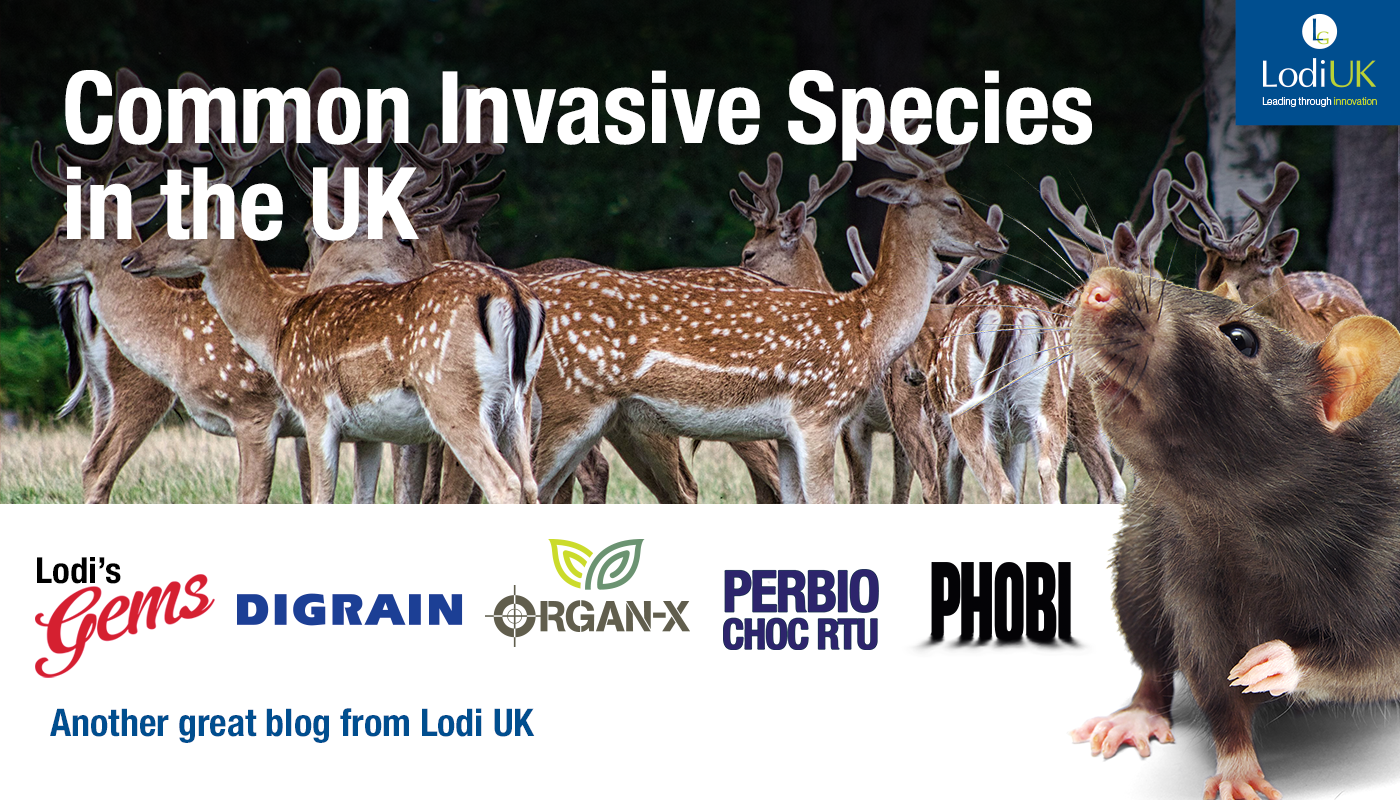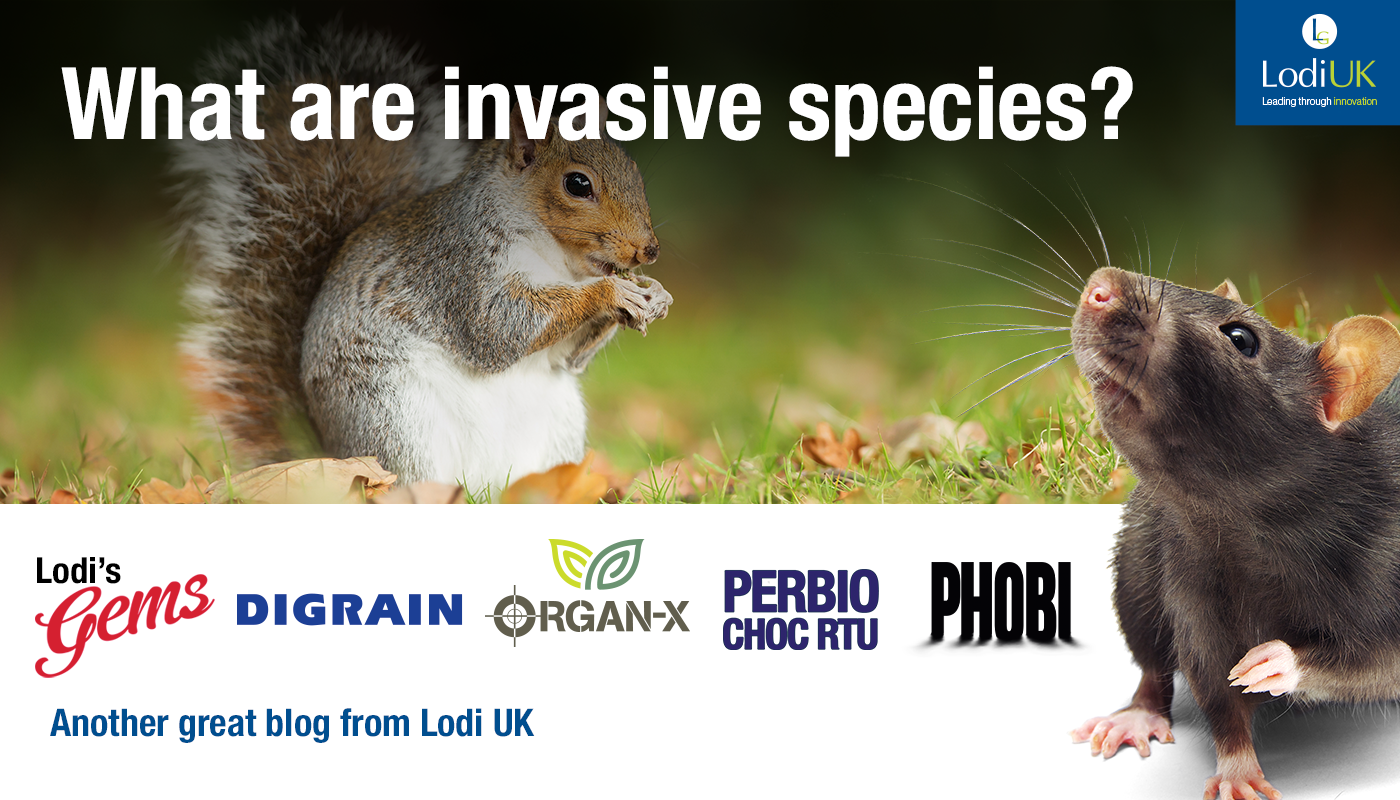
Last week, our blog covered what are invasive species, how they spread, and how they affect the ecosystems that they enter.
According to the RSPB, there are more than 3,000 invasive species in the UK. Some of them have been fairly recent arrivals to our shores, such as the American Bullfrog (lithobates catesbeianus). The bullfrog was first found living wild in East Sussex in 1996 and it’s thought that they were released due to being unwanted pets or escaped from garden pets. Some pest species have been in the country for so long that now they have become (somewhat!) beloved symbols of the British countryside.
Here some invasive species that you might not know about!
Rabbits
Rabbits are one of the most iconic animals in the British countryside. Although rabbits (Oryctolagus cuniculus) were part of the British landscape before the last Ice Age, they died out during the cold period. Rabbits were reintroduced by the Romans around 2,000 years ago although they become more widespread after the Normans brought them to the UK as a food source.
Rabbits have become a widespread food for a variety of predators. These include native species such as buzzards, foxes, and stoats but the non-native species, the American Mink. It’s also estimated that rabbits cause £260 million annually in damage to crops, businesses, and infrastructure.
They have also been called ‘ecosystem engineers’ as they are able to maintain calcareous grassland and heathland habitats through their grazing.
Grey Squirrel
The grey squirrel (Sciurus carolinensis) is common throughout the UK, especially in its parks and woodlands. The International Union for Conservation of Nature (IUCN) has listed the grey squirrel as one of the top 100 worst invasive species. They are native to North America but were first introduced to the UK in 1876 and rapidly colonised the country.
Grey squirrels have had a devastating effect on the native red squirrel. Grey squirrels are carriers of squirrel pox (parapox virus) which they are immune to, although it is fatal to red squirrels. They are much more prolific breeders and are able to have up to 2 litters of young per year if there is enough food available. They also damage, or kill, many native broadleaf trees by stripping the outer bark so that they can eat the softer wood underneath.
Carp
The carp (Cyprinus carpio) was introduced to the UK in the Middle Ages as a source of food. As carp have been in the UK for so long, they have been selectively bred to form different variations, such as the common carp, the mirror carp, and the leather carp. Although they are the same species, fishermen are probably more familiar with the mirror carp as they tend to be more commonly stocked in lakes and ponds.
The introduction of carp has had a negative impact on native British fish. Carp are able to outcompete a lot of our native species as they have the ability to thrive in a wide range of water temperatures with low oxygen levels. When they eat, they stir up a lot of sediment which can affect the water quality.
Red-Legged Partridge
The red-legged or French partridge (Alectoris rufa) was introduced by Charles II to provide target practice for his gun.
Although the red-legged partridge is an introduced species, they are not classed as an invasive species as they have caused little to no damage to the British ecosystem. Since the introduction of the French partridge to the UK, there has been a decline in the population of the English partridge although the two are not linked. The population of English partridge declined due to habitat loss after hedgerows were pulled up.
Rainbow Trout
Rainbow trout (Oncorhynchus mykiss) are an angler's dream. As well as offering good sport, they are delicious with a sweet clean flavour and firm flesh. They were introduced to UK fish farms from North America in the early 20th century. They have been introduced all over the world and are present on every continent except for Antarctica.
The only UK river with a self-sustaining population of rainbow trout is in the Derbyshire Wye. Rainbow trout now make up 25% of fish caught on that stretch of river and they live peacefully alongside the native brown trout (Salmo trutta).
Fallow Deer
Fallow deer (Dama dama) are technically a re-introduced species, like rabbits. They are native to our shores but became extinct in the last Ice Age 40,000 years ago. Fallow deer were re-introduced by the Normans who kept them in parks for hunting and as ornaments. There are still fallow deer in parks but most of the population is feral and made up of park escapees!
Fallow deer have not caused a huge negative environmental impact as other species, but at higher densities, they can become a nuisance. They can cause damage to arable crops, especially in the wintertime. In forests, they eat the buds and shoots which can lead to slower tree growth.





